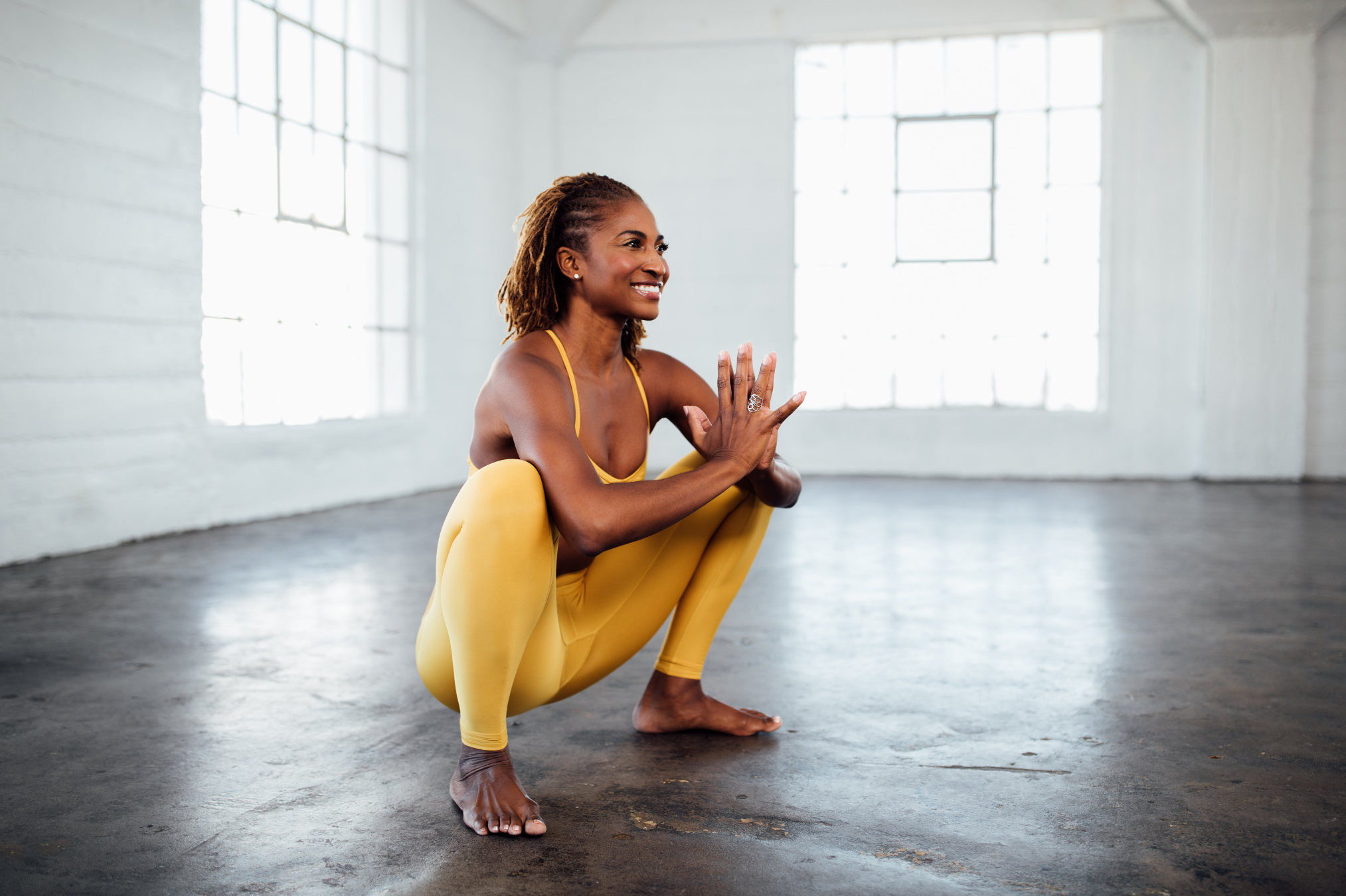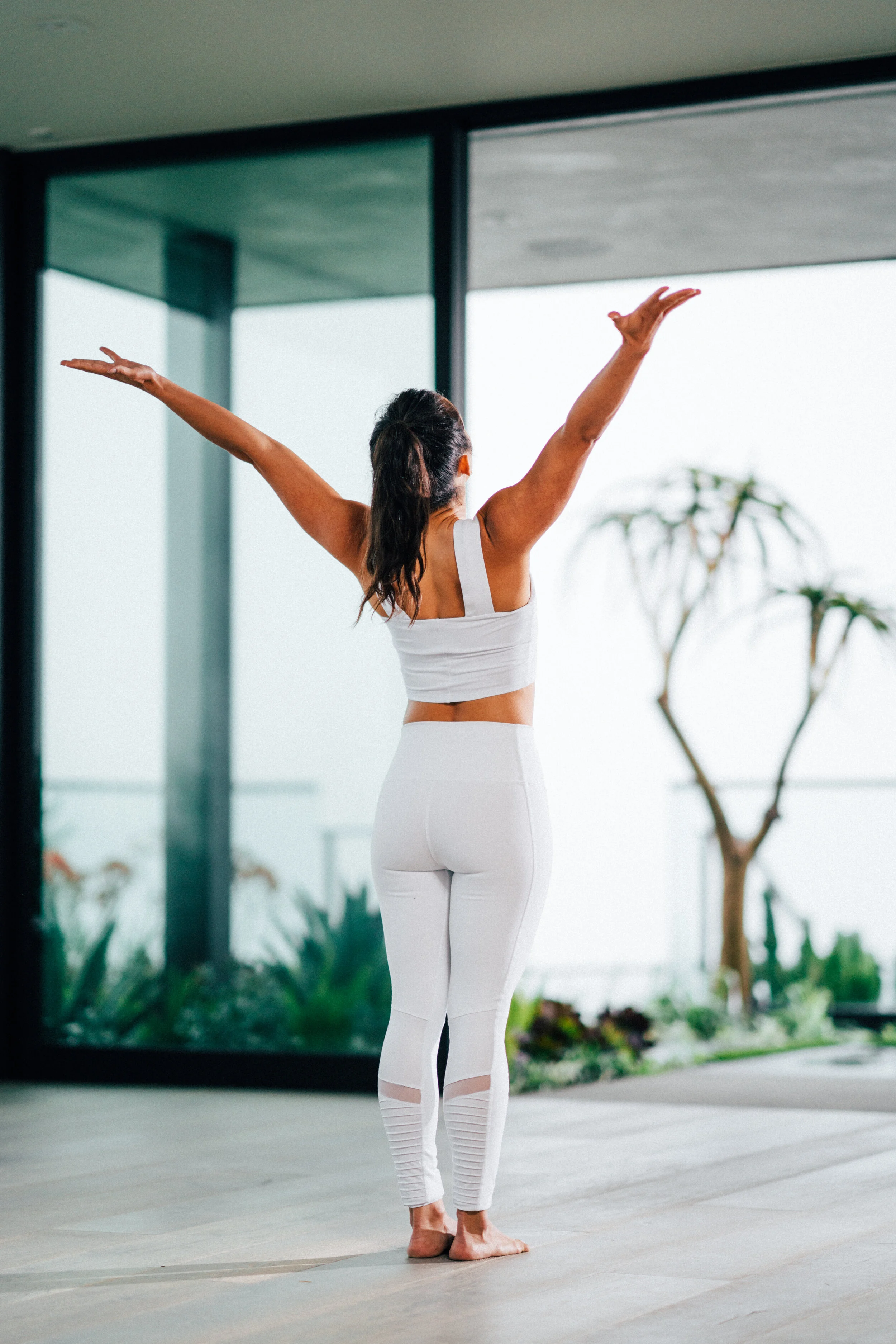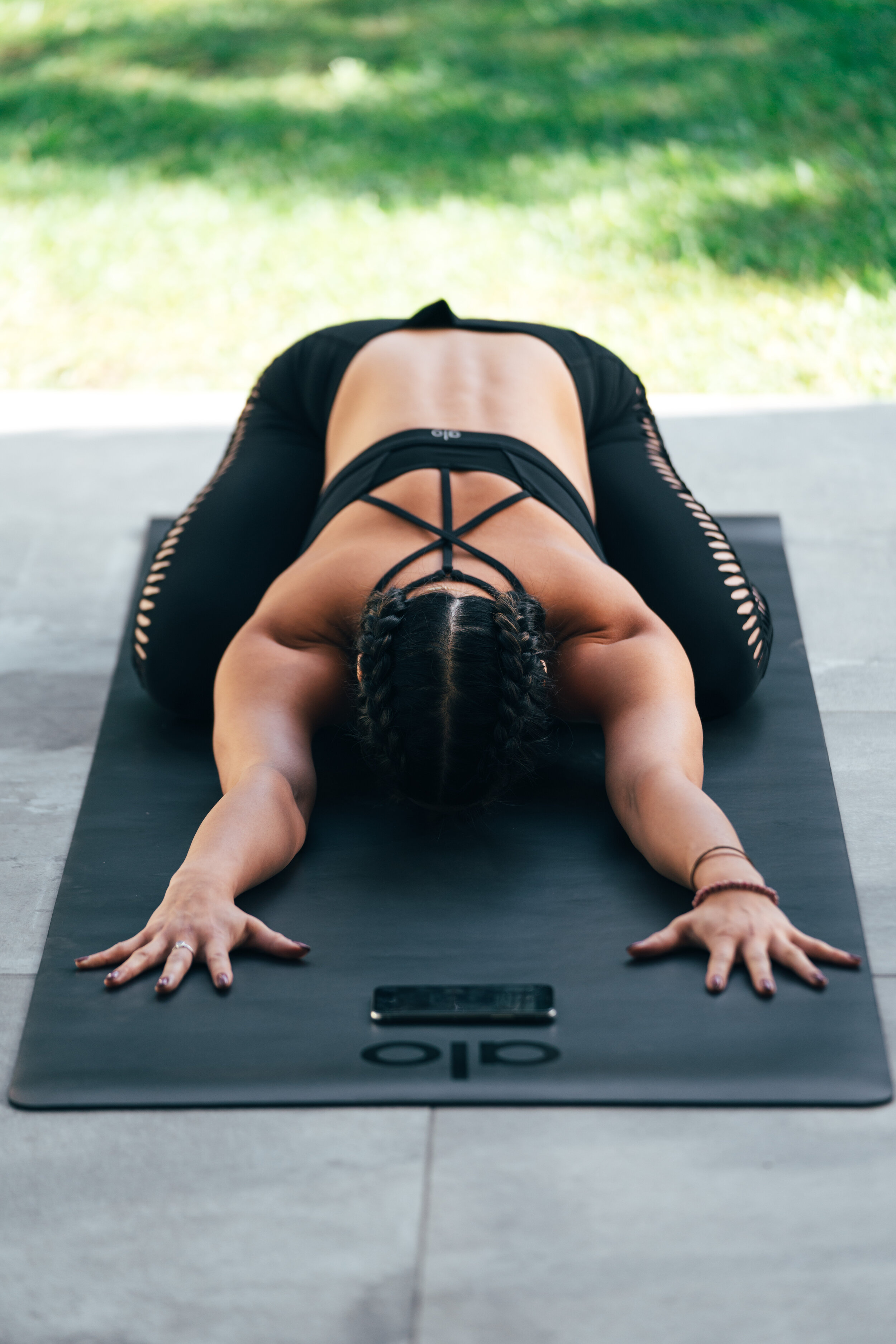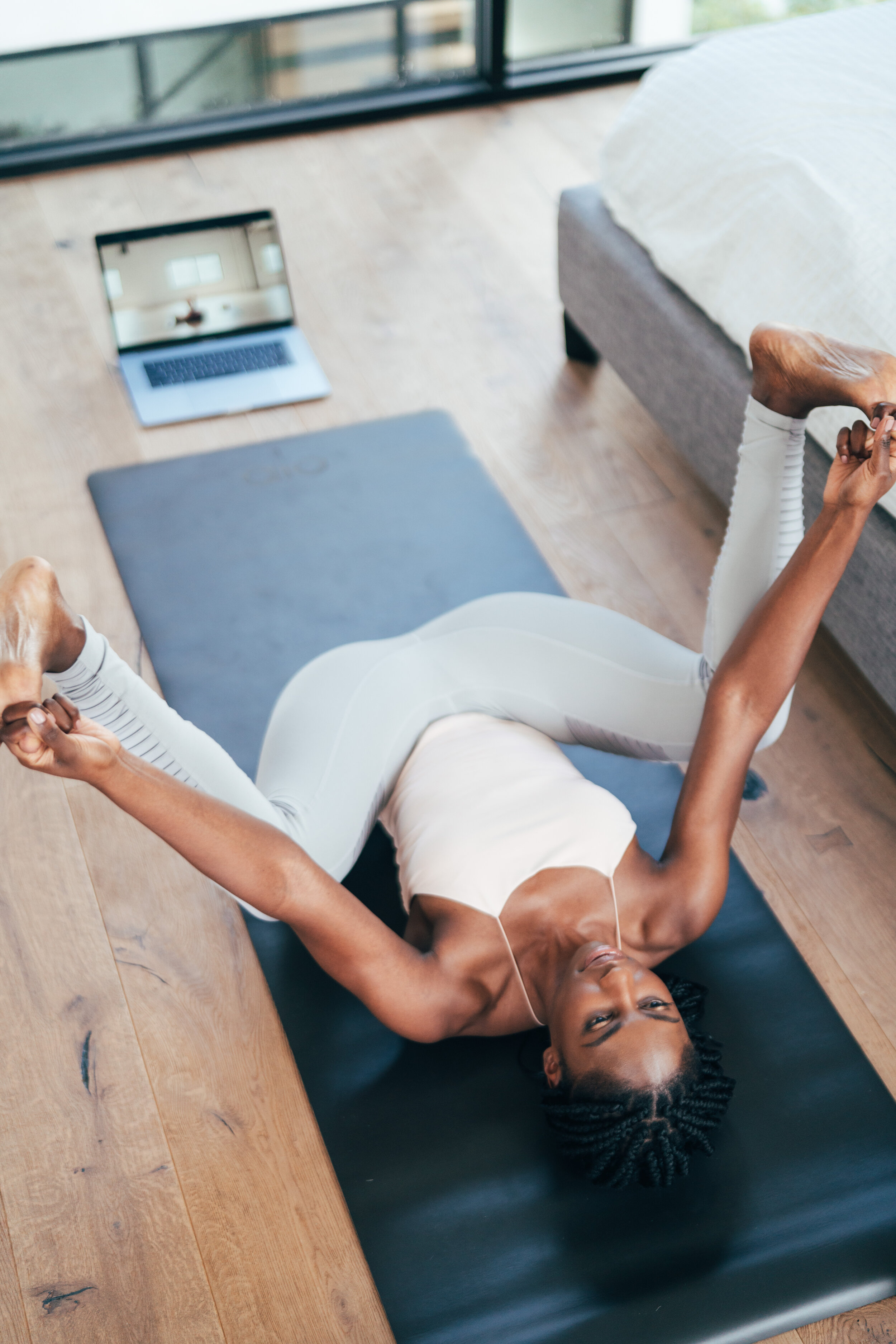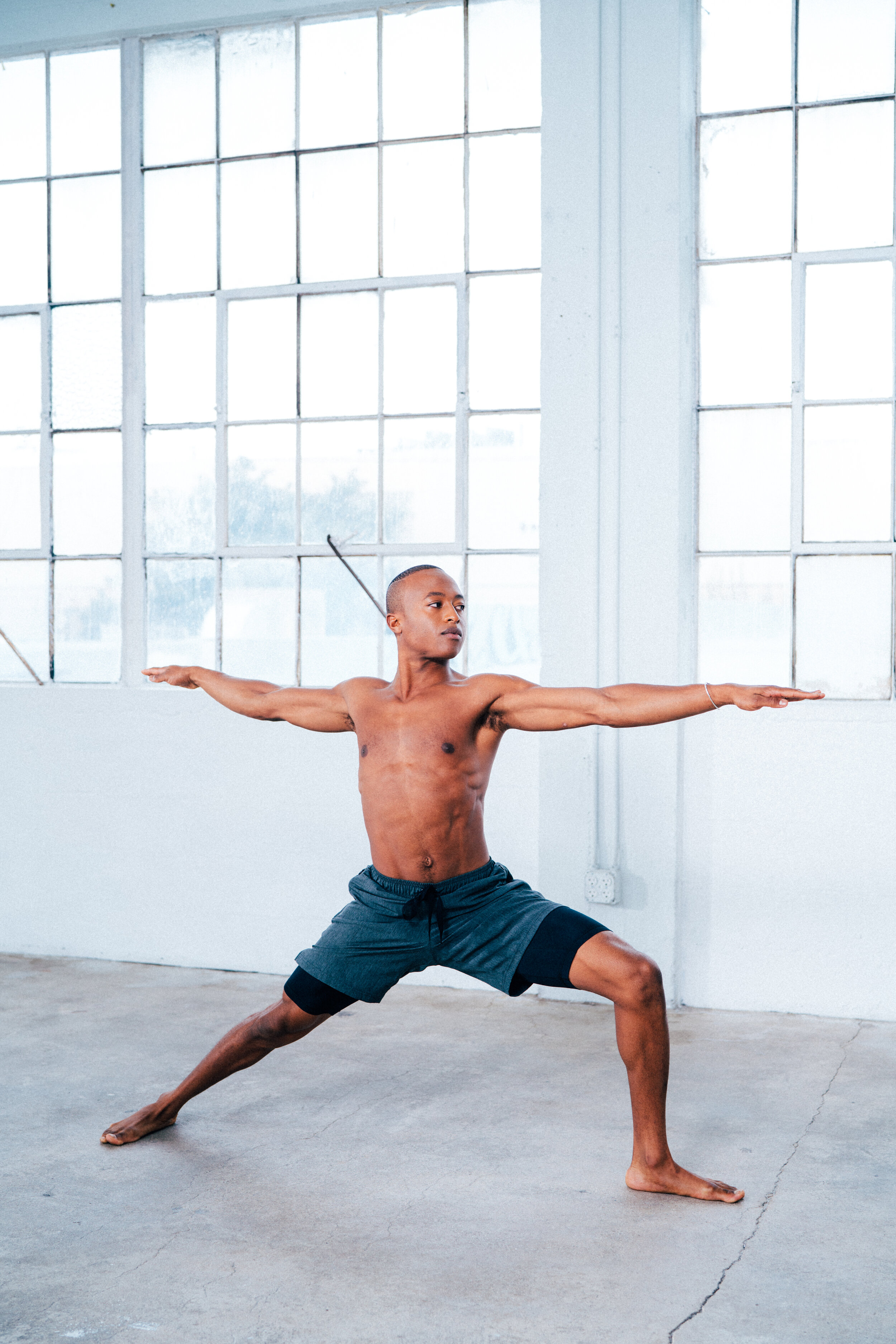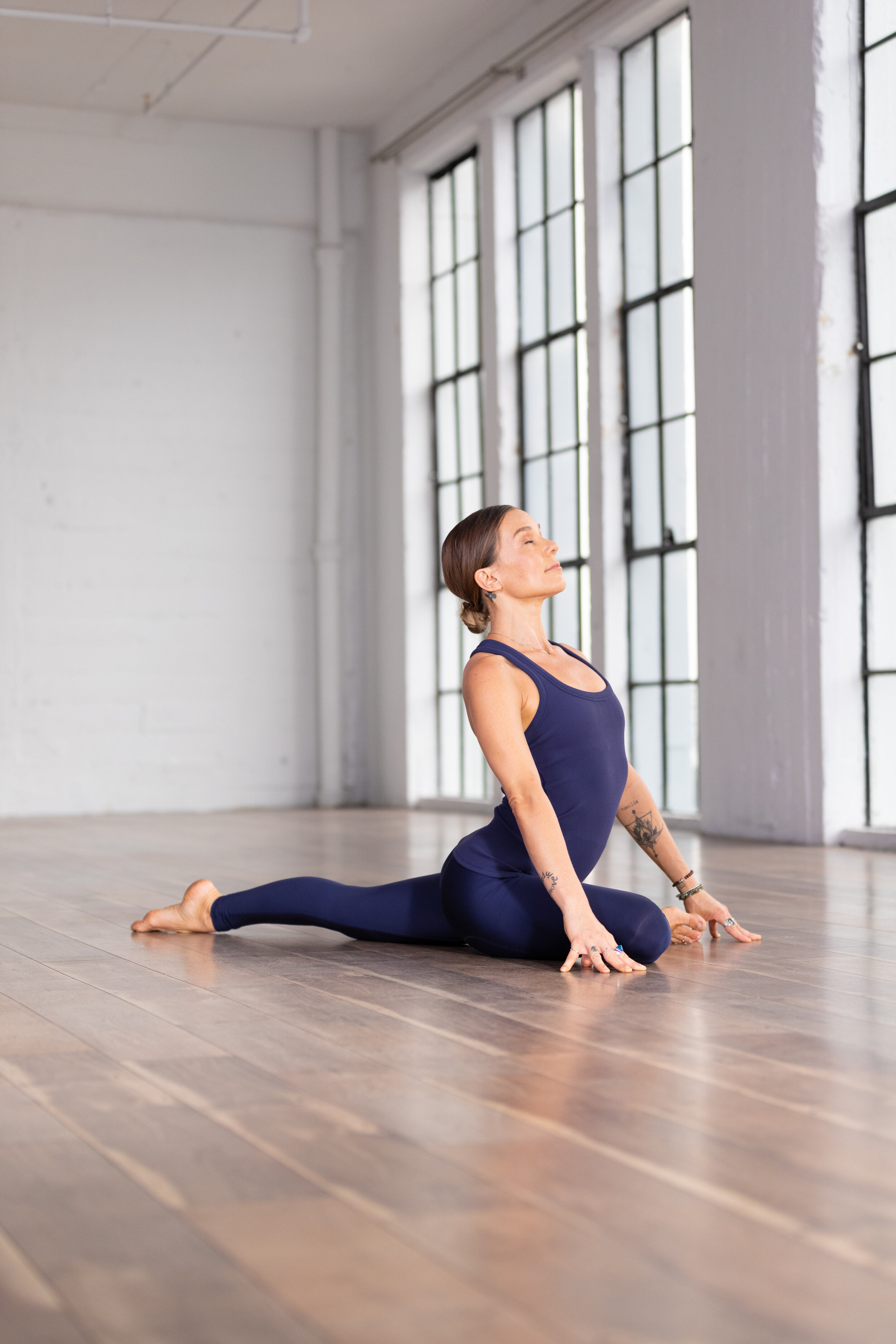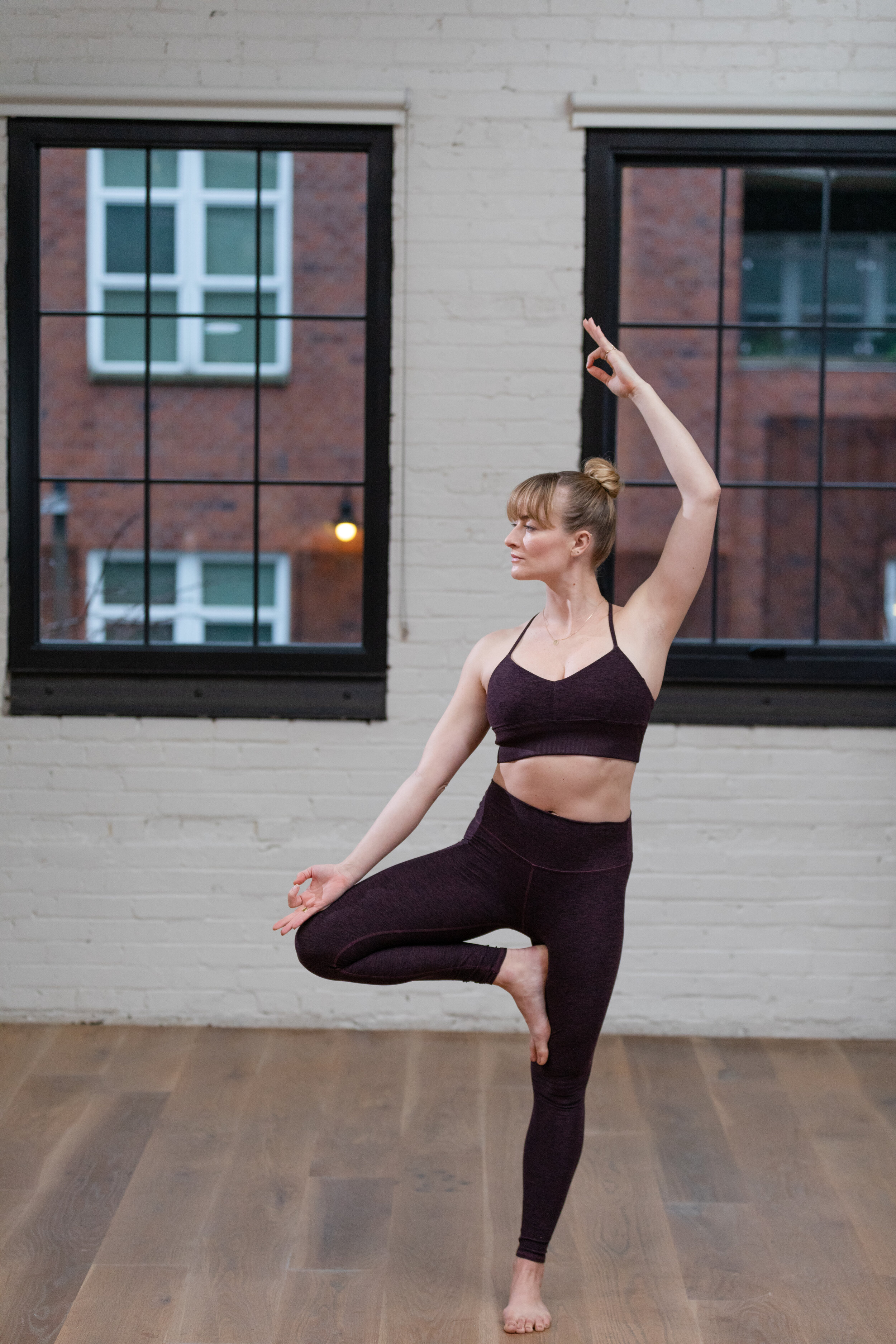Grounding Yoga Poses to Reduce Anxiety
One of the benefits of yoga you’ve surely heard is how it helps you become “more grounded.” But what exactly does being grounded mean? Grounding is essentially about getting out of the world inside of our heads of worries, stress, and checklists, and connecting to the present moment, as well as the magic of the earth below us. As a result, we feel calmer, more balanced, and less stressed and anxious. A study showed that grounding — in this case, actual physical contact with the Earth, like walking barefoot outside — had a powerful healing effect, reducing pain and inflammation in the body. We’ve rounded up 10 of some of the most powerful grounding poses that will help you tune back in with your mind and body and tune out stress and anxiety.
Garland Pose
Garland Pose (Malasana), also known as the Yogic Squat or Yogi Squat, opens your hips and groin while stretching your feet and ankles. This is a great remedy for hours of sitting. Try this pose by squatting on the floor with your feet turned out, then bring your hands together in prayer with your elbows pressing against the inside of your knees. Lift your heart to your hands and feel the soles of your feet connect with the ground beneath you. Try to keep your spine long as you sink into this pose.
Mountain Pose
A foundational yoga pose, Mountain is simple but highly effective for keeping your bodily awareness in check. You’ll start by standing on your mat with your feet close together or hip-width apart and your toes fanned out. Engage your quads to lift your kneecaps and root down through your feet and calves. Keeping your spine long, lift up through the crown of your head toward the ceiling. Drop your shoulders down and back and lift your chest. Reach your fingers down with your arms at your sides.
Child’s Pose
Child’s Pose, a resting pose, feels like the ultimate safe haven. It’s calming, encourages strong and steady breathing, and stretches your back, hips, thighs, and shoulders. To get into Child’s Pose, you’ll start in Tabletop Pose on your mat. Sink your hips to your heels and place your forehead on the floor. You can opt to stretch your arms out in front of you, place them alongside your body with your palms up, or fold them in front of you while your forehead rests on your palms. Focus on taking full, deep breaths and allowing your body to sink into your mat.
Happy Baby
Happy Baby is aptly named because it’s nearly impossible to get into this pose and not feel an instant mood lift. While simple, it also opens your hips, massages your spine, and stretches your hamstrings, inner thighs, and groin. Lie on your back and hug your knees in toward your underarms. Hook your pointer and middle finger around each of your big toes and pull slightly down, allowing your hips to relax. You can opt to rock side to side to gently massage your back, or stay as is.
Savasana
Getting into Savasana is inviting both your mind and body into a calm space, but can be more challenging than it first appears. Starting on your back, take your feet as wide as your mat and allow your feet to fall open. Turn your palms up and place your arms at your sides. Close your eyes, breathe in deeply through your nose, and exhale with a deep sigh through your mouth. Allow your entire body to relax and be present.
Warrior II
If you want to feel strong, steady, and focused, Warrior II is just the pose to practice. Start in a High Lunge with your right leg forward, then open your hips to face the left and bring your back foot parallel to the back edge of the mat. Sink deeper into your legs while you align your spine vertically and extend your arms out horizontally. Reach out through your fingers and bring your gaze forward. Switch sides.
Bridge Pose
Bridge Pose is great for stretching out areas of your body you don’t often think of stretching, like the abdomen and chest, as well as building strength in your legs, glutes, and back. To get into Bridge, lie down on your back and place your feet flat on the floor at a comfortable distance from your hips. Place your arms flat at your sides, pressing your shoulders and back into your mat as you lift your hips up. Engage your inner thighs and root down through the soles of your feet.
Pigeon Pose
Pigeon offers a deep hip-opening stretch but can take time to learn to love. To get into Pigeon, you’ll start in Three-Legged Downward Dog. Bend your right knee and bring it forward to the floor, resting it behind or at the outside of your right hand. Stretch your left leg back and rest it on the floor, toes pointed behind you or tucked under as you remain upright. You can also lower down to your forearms or forehead to make this pose more passive. Switch sides.
Tree Pose
Seeking stability, balance, and focus? Tree Pose challenges all three while giving your inner thighs, chest, and shoulders a good stretch while strengthening your legs and feet. To get into Tree Pose, you’ll stand on your mat with your feet together, then lift your right leg off the ground as you grab hold of your right knee. Find balance by rooting down through your standing leg, then place the sole of your right foot as high as you can on your inner left thigh, calf, or ankle, with toes facing down. Press your foot into your thigh and reach your arms up to the ceiling or rest them at heart center.
Eagle Pose
Sometimes the more challenging poses bring us the most calm due to the amount of focus we have to put into them. Eagle Pose is both fun and challenging, strengthens your lower body, and stretches your shoulders, back, hips and thighs. To get into Eagle Pose, come into a standing position on your mat. Cross your right knee over your left leg and bend your left leg, sitting your hips slightly back. If your flexibility allows, wrap your right foot behind your standing leg. For your arm position, straighten your arms and wrap your left arm underneath your right arm, either grabbing your shoulders or pressing the back of your hands or palms together. Finally, sink your tailbone down to a comfortable height and bring your gaze forward or slightly up.
Looking for more grounding yoga poses? Try our Grounding Flows playlist on Alo Moves, free with a 14-day trial.


